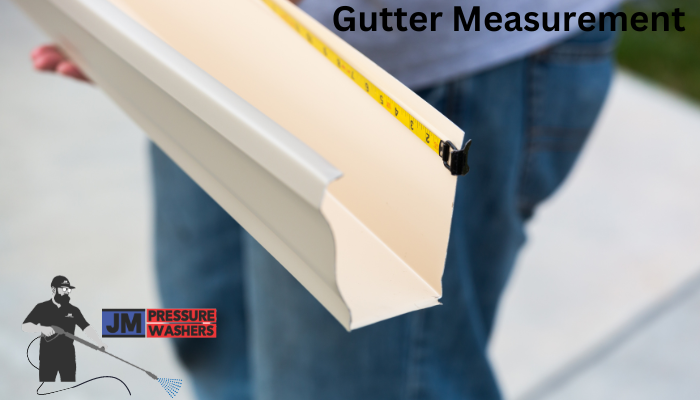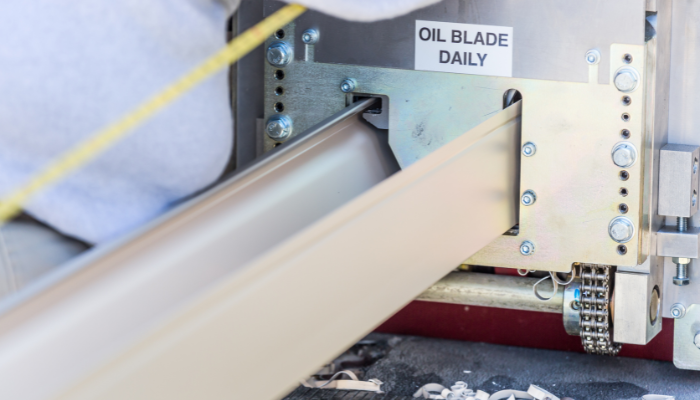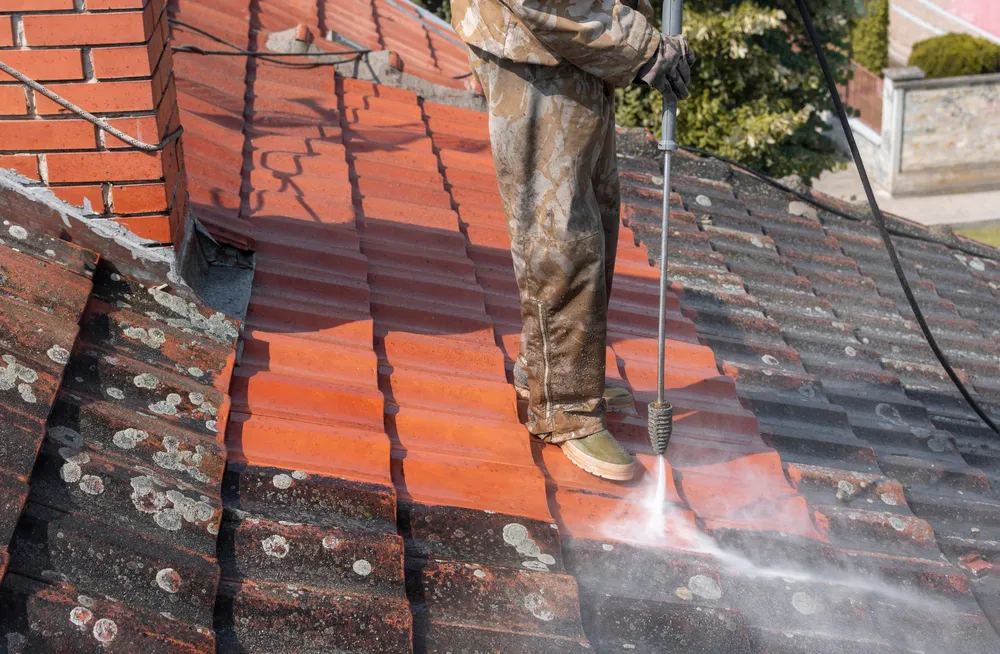CALL US TODAY · 909-701-9977
Unlocking Precision: How to Measure Gutter Sizes Effectively
How to measure gutter size accurately forms the bedrock of a seamless gutter system. Precision in these measurements isn't merely a matter of convenience; it's pivotal to ensuring the effectiveness and longevity of your gutter installation. Understanding the dimensions of your gutters is fundamental before diving into any maintenance, repairs, or enhancements. Gutter systems, comprising various components intricately working together, rely heavily on correctly measured sizes to function optimally.

Methods of How To Measure Gutter Size
Step-by-Step Guide for Measuring Gutters
Tools Required:
- Ladder
- Measuring tape
- Paper and pen for notes
Safety Precautions:
- Ensure the ladder is stable and on level ground.
- Use safety equipment, such as gloves and goggles, when climbing or handling gutters.
Measuring Gutters for Guards
Specifics for Guard Installation:
- Decide on the type of gutter guard you plan to install (mesh, screens, foam, etc.).
- Understand the specific requirements of your chosen guard in terms of gutter size and shape.
Techniques for Precise Measurements:
- Measure the width of the gutter opening.
- Measure the depth from the back to the front of the gutter.
- Note any variations in width or depth along the gutter's length for accurate guard installation.
Rain Gutter Size Measurement Techniques
Factors Influencing Rain Gutter Sizing:
- Consider the average rainfall in your area.
- Assess the roof size and pitch to determine the amount of water runoff.
- Factor in any unique architectural features that may affect water flow.
Tips for Accurate Rain Gutter Measurements:
- Measure the length of each section of the gutter separately.
- Measure the width and depth of the gutter channel.
- Calculate the total length and sum up the dimensions for accurate sizing.
Enhanced Functionality and Efficiency:
Optimal Water Flow: Correctly sized gutters ensure efficient water flow. If gutters are too small, they can easily become overwhelmed during heavy rain, leading to overflow and potential water damage. If they're too large, they might not efficiently collect and guide the water, leading to inefficiency and wastage.
Preventing Clogs: Properly sized gutters are less prone to clogging. When gutters are too small, debris can accumulate more quickly, leading to blockages that hinder water flow. This can result in overflow, water pooling, and potential damage to the structure.
Less Maintenance: When gutters are appropriately sized, they require less frequent cleaning and maintenance. Larger gutters can accommodate more water without clogging, reducing the frequency at which they need to be cleared of debris.
Preventing Water Damage:
Foundation Protection: Inadequate gutters or improper sizing can lead to water accumulating near the foundation of your home. Over time, this pooling water can cause damage to the foundation, leading to cracks and structural issues.
Preventing Erosion: Properly sized gutters help direct rainwater away from the building. Without the correct size, water can erode the soil around the foundation, potentially leading to soil instability and landscape damage.
Preventing Interior Damage: Water overflow from improperly sized gutters can seep into walls, causing moisture damage, mold growth, and potentially compromising the structural integrity of the building.
Longevity of Gutter Systems:
Reduced Stress: When gutters are appropriately sized, they are better equipped to handle the volume of water they receive during heavy rains. This reduces the stress on the gutter system, prolonging its lifespan.
Minimized Wear and Tear: Improperly sized gutters are more likely to experience damage due to excess weight from water accumulation or debris build-up. This can lead to premature rusting, corrosion, or detachment from the structure.
Cost Savings:
Investing in properly sized gutters upfront can save money in the long run by reducing the need for repairs or replacements caused by inadequate water management.
Common Mistakes in Gutter Measurement

Errors to Avoid:
Inaccurate Length Measurements: Misjudging the length of gutters can result in insufficient coverage or excess material, leading to wastage or improper installation.
Neglecting Slope Consideration: Overlooking the slope calculation can cause improper drainage, leading to water pooling and potential damage to the property.
Ignoring Downspout Placement: Proper positioning of downspouts can help efficient water flow, causing overflow or blockages.
Underestimating Capacity Needs: Failing to calculate the required gutter capacity based on local rainfall patterns can lead to inadequate water management.
Not Accounting for Roof Design: Forgetting to consider roof design intricacies such as valleys or complex angles can result in inaccurate measurements.
Impact of Incorrect Measurements:
Water Damage: Improperly measured gutters may not effectively channel water away, leading to water seepage into the foundation, walls, or basement, causing structural damage.
Overflow and Blockages: Inadequate sizing or incorrect placement can cause overflow and blockages, potentially leading to erosion, landscape damage, or even interior flooding.
Maintenance Issues: Incorrect measurements might make gutter maintenance more challenging, requiring frequent gutter cleanings or repairs.
Aesthetics and Property Value: Ill-fitting gutters can affect the property's appearance and decrease its value due to a lack of visual appeal.
Troubleshooting Measurement Issues:
Reassessment: Double-check measurements to ensure accuracy. Utilize multiple measurement tools and techniques to verify dimensions.
Consultation: Seek guidance from professionals or experienced individuals in gutter installation. They can offer insights and tips to rectify measurement errors.
Consider Slope and Capacity: Review the slope calculations and capacity requirements based on local weather conditions. Adjust the gutter size and downspout placement accordingly.
Adaptability: Opt for gutter systems that allow for adjustments during installation to accommodate minor measurement discrepancies.
Regular Maintenance: Even with accurate measurements, ongoing maintenance is crucial. Regularly inspect and clean gutters to prevent issues caused by debris accumulation or blockages.
Professional Assistance: If uncertainties persist or if the errors seem significant, consider hiring a professional to reevaluate measurements and assist with installation.
Cost Of Gutter Size Measurement
DIY Measurement: If you're measuring the gutter size yourself, the cost would generally involve the tools you might need to buy or rent, such as a measuring tape or a ladder if you don't have one. These costs can be minimal and one-time expenses.
Professional Services: Hiring a professional to measure your gutter size might incur a service fee. Some gutter installation companies or contractors offer free estimates, while others may charge a nominal fee for this initial assessment. JMPressureWashers provides the best guidance related to how to measure gutter size.
Complexity of Measurement: If your property has multiple stories, intricate rooflines, or difficult access points, this could increase the cost as it might require more time and specialized equipment for accurate measurements.
Additional Services: Sometimes, a gutter size measurement might be part of a broader service package. For instance, if you're considering a gutter replacement or installation, the measurement cost might be included in the overall quote.
Location: Costs can also vary based on your location and the prevailing rates for professional services in that area. Urban areas might have higher service charges compared to rural areas.
Conclusion
Precision in gutter sizing is a critical factor in effective building water management systems. It's not just about fitting gutters to the structure; it's about ensuring they function optimally. To achieve this, a meticulous understanding of measuring techniques is essential. A recap of these techniques provides the foundational knowledge required to accurately assess dimensions, angles, and slopes for gutter installation. Feel free to
contact us for any type of query or the services related to
how to measure gutter size.
FAQs
Why Is It Important To Measure Gutter Size Accurately?
Accurate measurements ensure you purchase the right quantity of gutter materials, preventing shortages or excess, which can affect installation and functionality.
What Tools Are Needed To Measure Gutter Size?
Typically, you'll require a measuring tape, ladder, and possibly a level to ensure precise measurements.
How Do I Measure The Length Of Gutters?
Start by measuring each straight run of the gutter along the eaves. Add these measurements together to get the total length needed.
How Do I Measure The Width And Depth Of Gutters?
Use a measuring tape to determine the width and depth of the gutter channel. Record these measurements accurately.
Are There Any Specific Safety Precautions To Consider When Measuring Gutters?
Yes, ensure your ladder is stable and secure. Use caution and follow safety guidelines when working at heights to avoid accidents.
What's The Best Way To Account For Corners And Downspouts In Measurements?
Measure the length of the gutters along the roofline and add extra length for corners. Downspouts might require separate measurements and considerations.
JM Pressure Washers Blog
Tagline here
Contact Us
Pressure Washing Services For:
Riverside County | San Bernardino County
Orange County | Los Angeles County
Rancho Cucamonga, California
Riverside, CA
Business Hours
- Mon - Fri
- -
- Saturday
- Closed
- Sunday
- -










